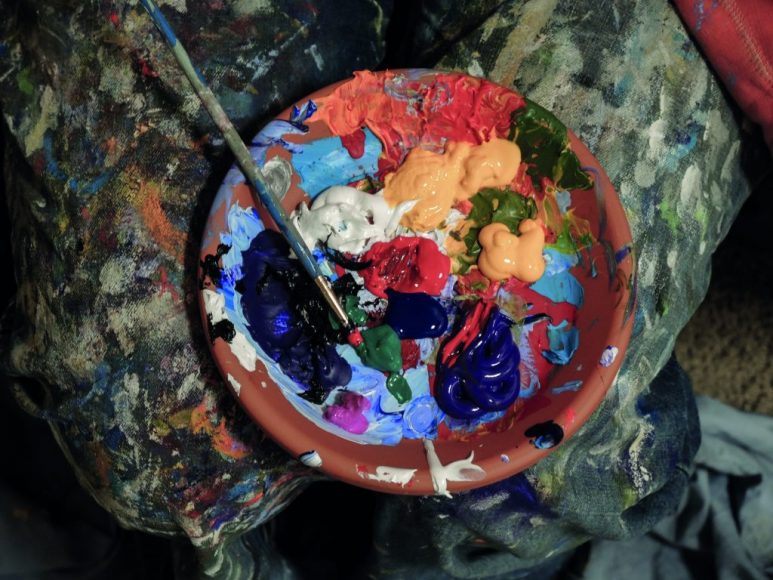For five centuries, Macao has been a meeting place of Europe and Asia, reflected in the city’s food, architecture and culture. Macao’s unique cultural combination has also been a factor in the creative arts. Seven locally based artists have collaborated in a joint public exhibition of 12 of their artworks at the Grand Lisboa Palace Resort Macau, which opened its first phase in July 2021. The works, which are in various artistic media, were created by seven artists: Eric Fok, Denis Murrell, Cai Guo Jie, Carlos Marreiros, Ambrose So, Konstantin Bessmertny and Ung Vai Meng. The collection showcases works of calligraphy, porcelain, tapestry, oils and mosaics, among others.
Showcasing various techniques
Ung Vai Meng, the former director of Macao Museum of Art and president of the Cultural Affairs Bureau, is a maestro combining different crafts in a single piece. His commissioned work Auspicious Stars Shining Over Macao celebrates the history and future of Macao, with a mixture of carpentry, metalwork, stonecraft, ironwork, and paving mosaics.
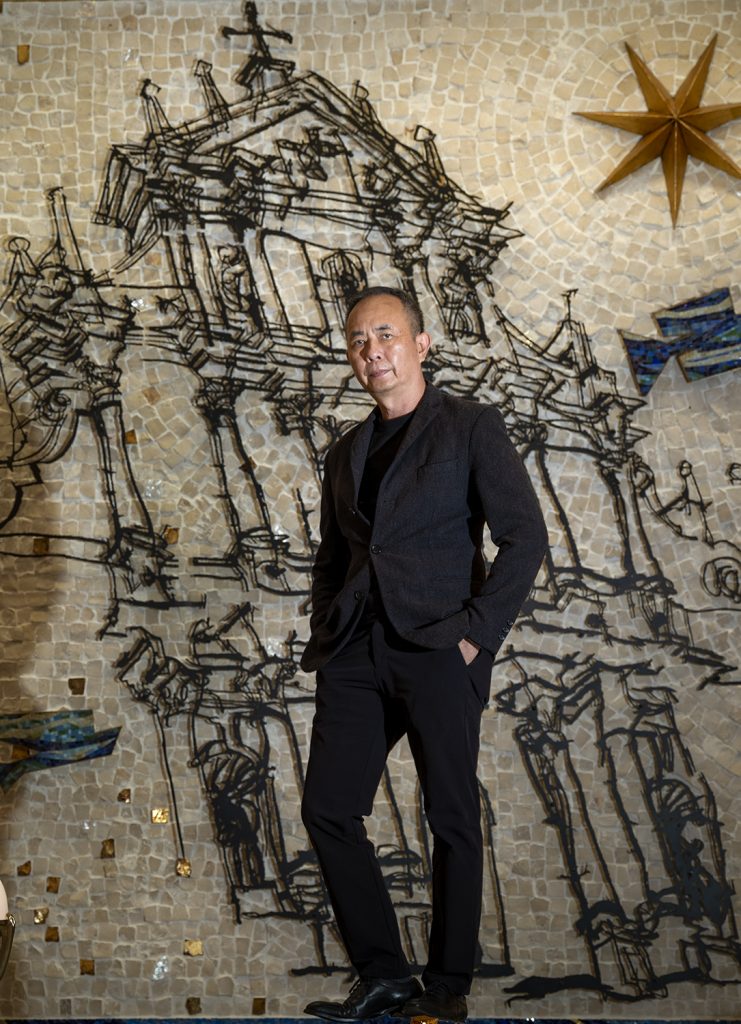
The art scholar and painter spent almost a year completing this love letter to the city. Using specially created paving stones – the city’s signature paving style originated in Portugal – the work recreates Macao’s iconic landmark, the Ruins of St. Paul’s, in iron. Imported from Portugal, the stones have been halved to lighten them. Carefully put together by the artist, each stone was drilled at the bottom and then mounted securely with steel wires. Some stones are coloured gold and others are inlaid with oyster shells. One of Macao’s alternative Chinese names is Hou Keng, meaning ‘oyster mirror’, a reference to the oyster beds surrounding the city’s peninsula coastline.
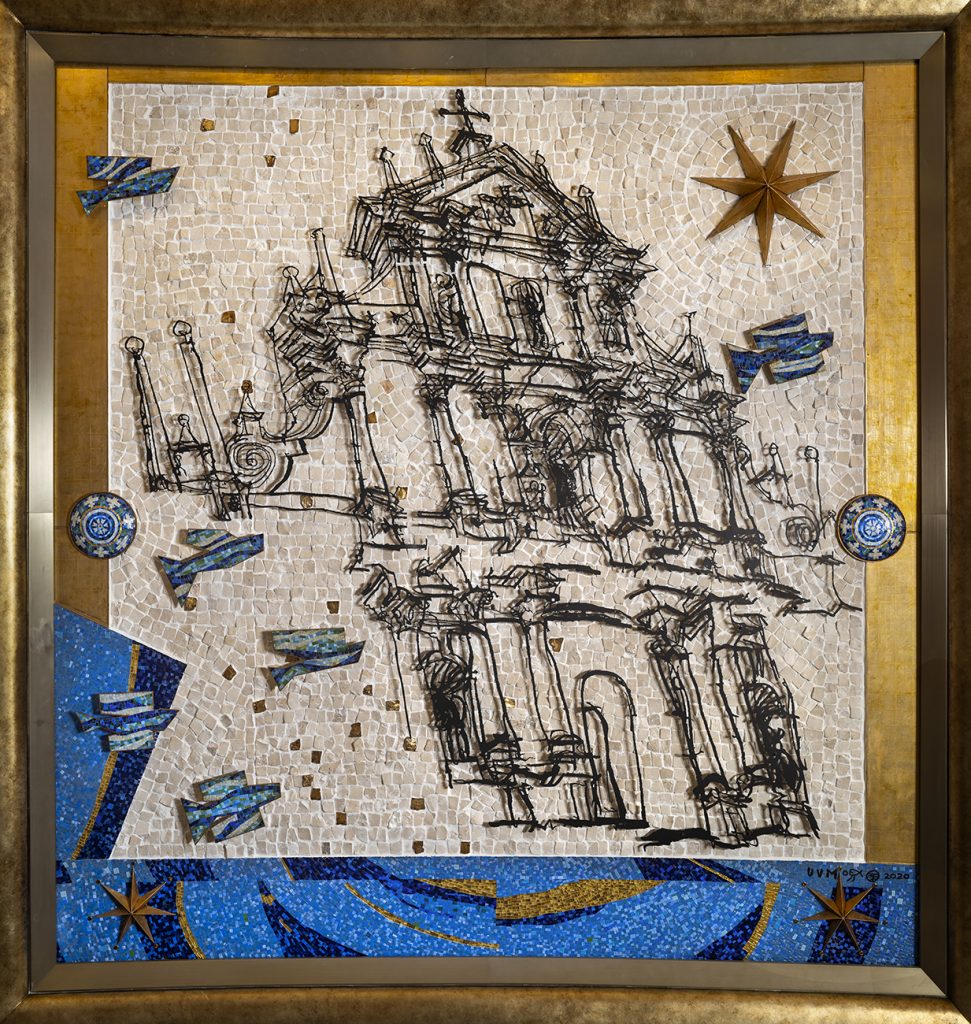
The gold and blue mosaic is inspired by the historic Hotel Lisboa’s decorative ceiling. There are six fish, with the number six suggesting infinity, according to a Chinese idiom. The combination of the motifs is a fond reminder of Macao’s past. A shining golden star at the top of the work represents Macao’s bright future.
Talking about the city’s future in arts development, the scholar strongly believes: “As long as more people know the value behind art and culture, more people will be able to support it. It’s not about supporting me as an artist, but rather supporting society as a whole to promote these kinds of artistic endeavours. In fact, culture is very important to everyone, including parents, children, and anyone in society. Today, our cultural entrepreneurs and the government are using art and cultural activities to allow our entire cultural ecology to develop healthily. I believe that we can succeed if we continue this way.”
Grand Scale
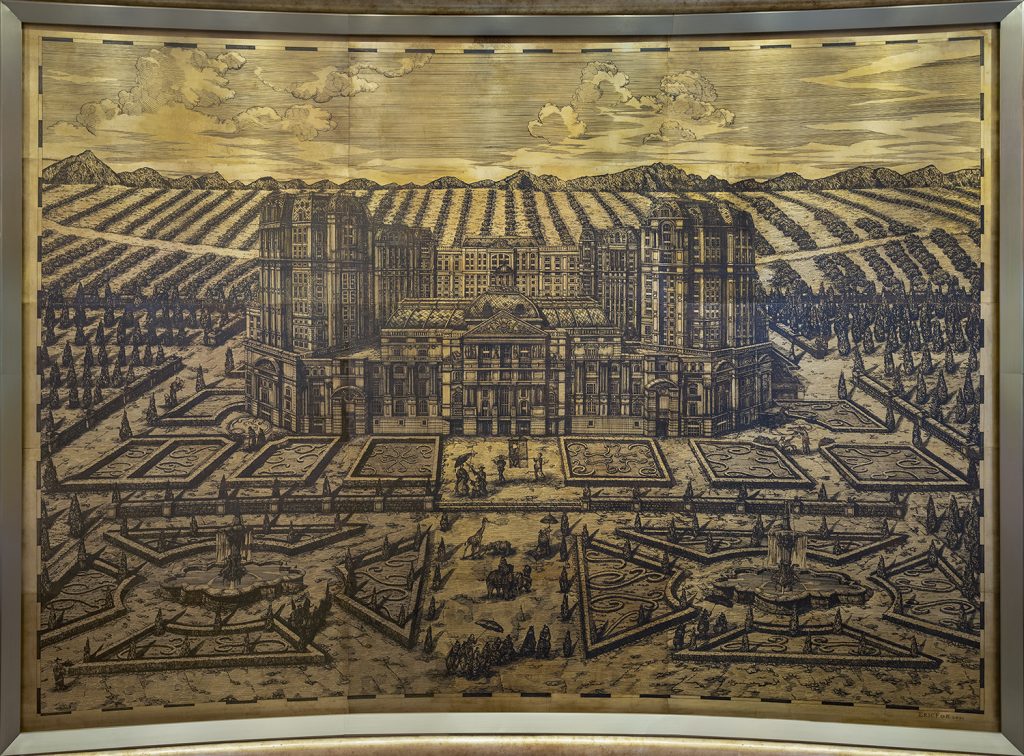
Famed for his meticulous ink-drawing brushstrokes on a much smaller scale, artist Eric Fok presents two works of art. Paradise – Grand Lisboa Palace marks Fok’s attempt on enlarging his intimate ink drawing to a grander scale and in a new medium. Fok says: “In this artistic creation for Grand Lisboa Palace, I once again challenged myself in terms of the scope and difficulty of painting, and I am also breaking through my own limits.”
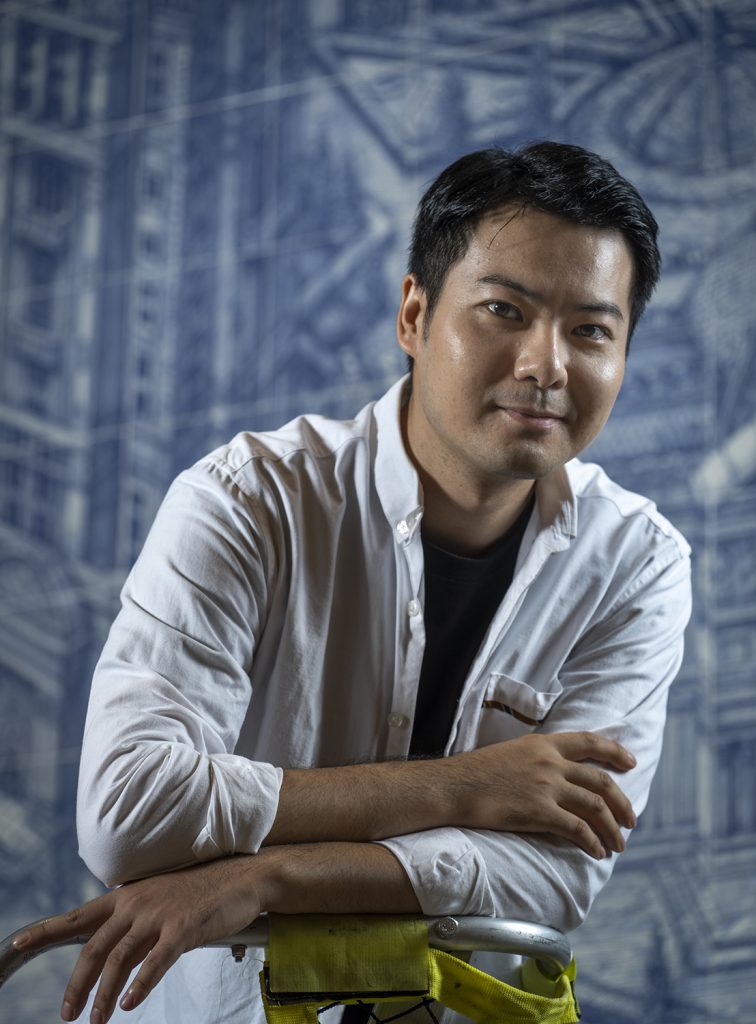
The use of metal engraving as a medium recognises Macao’s historic role as a trading port for silver. Visitors can therefore view Fok’s brushstrokes from a different perspective. The golden colour adds a timeless feel to the panoramic view of the hotel, which is drawn with a visual reference to the Grand Trianon from the Palace of Versailles in France.
The second piece by Fok is Paradise – Ships on the Oriental Coast, which adapts Fok’s ink on paper drawing style to Portuguese porcelain tiles. The blue shades ooze tranquility and blend perfectly with the elegant marble wall; however, the dynamism of Old Macao still emerges from Fok’s careful illustration of churches, ships, and people during the Age of Discovery. The piece combines the city’s past and present by depicting the new hotel in the centre.
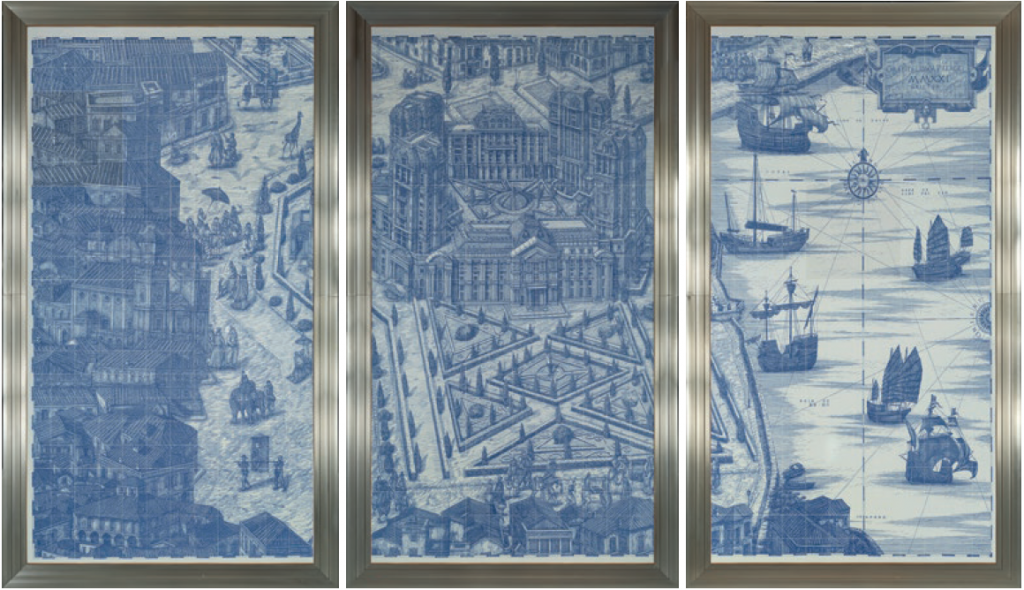
This commission means a great deal to the artist, he says: “The Lisboa brand has created a number of unique landmarks of extraordinary significance for the people of Macao. My memory of visiting Hotel Lisboa as a child is still vivid and now my art pieces are part of Grand Lisboa Palace, which means my work will surely become someone else’s memory in the future.”
Humility Scroll, sized at 3.68 metres wide and 4.547 metres high, sits in grandeur at the West Lobby entrance, which is opposite the East Asian Games Dome. Created by SJM Holding’s Vice-chairman, Executive Director and Chief Executive Officer Ambrose So, who is also a calligrapher, this piece is made of black brick ceramics with white inscriptions of the 15th chapter of Yi Jing (Book of Changes), an ancient Chinese divination manual used during the Western Zhou period (1000-750 BC), the Warring States period (475–221 BC) and early Imperial period (500-200 BC).
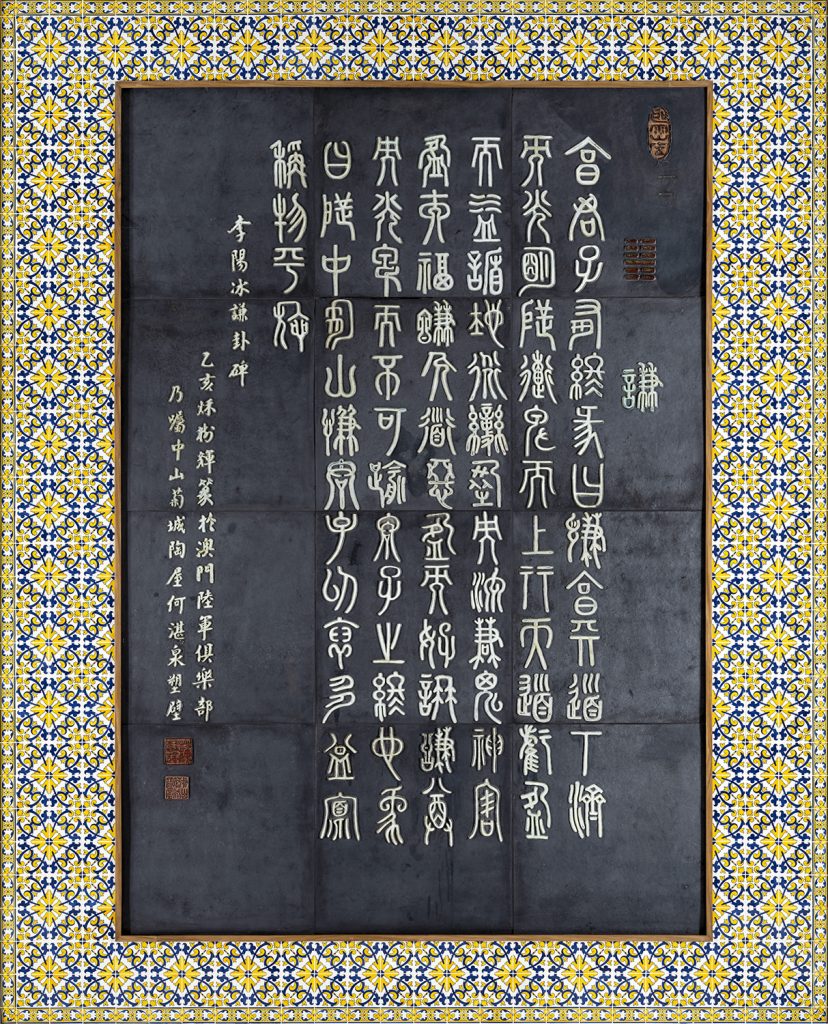
The chapter explains the virtue of modesty and the subject matter is articulated through the small seal script (小篆) – the standardised writing style adopted when Emperor Qin Shi Huang unified the six warring states around 220 BC. Framed in hand-painted Portuguese azulejos (porcelain tiles), this artwork flows with grace.
The black ceramics and the inscription were processed in a high-heat dragon kiln in Zhongshan, Guangdong province. The master overseeing the ceramic heating was the veteran specialist He Zhan Quan, who applied an ancient technique dating back to the Ming and Qing dynasties. One notable feature is the greenish glazing on the word ‘Humility’ (謙), which is a result of yao bian (a furnace transmutation that leads to an unpredictable colouring change in the kiln).
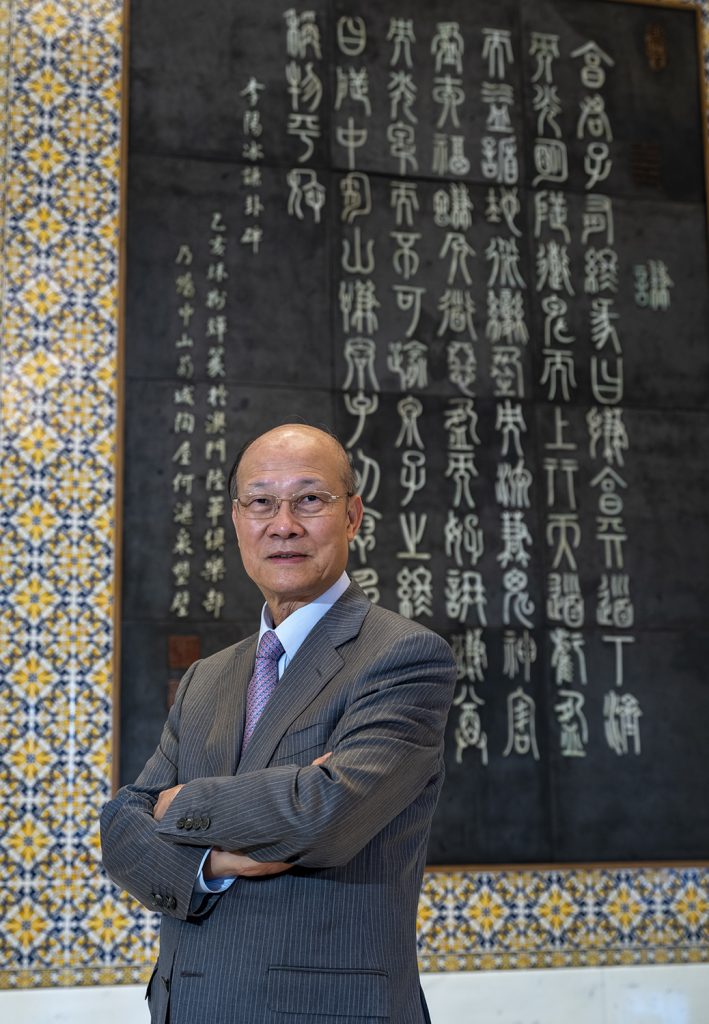
Abstract art
Taiwanese artist Cai Guo Jie, who has been based in Macao for a decade, has contributed a great deal to the local art scene – being the former vice-president of the Art for All Society and a visual art instructor at the Macao Museum of Art. He is now immersing himself in research on intermedia art theory and practice at the China Academy of Art, and he also lectures in various institutions including the School of Arts at Macao Polytechnic Institute, Macau University of Science and Technology, University of Macau and Macao Institute for Tourism Studies.
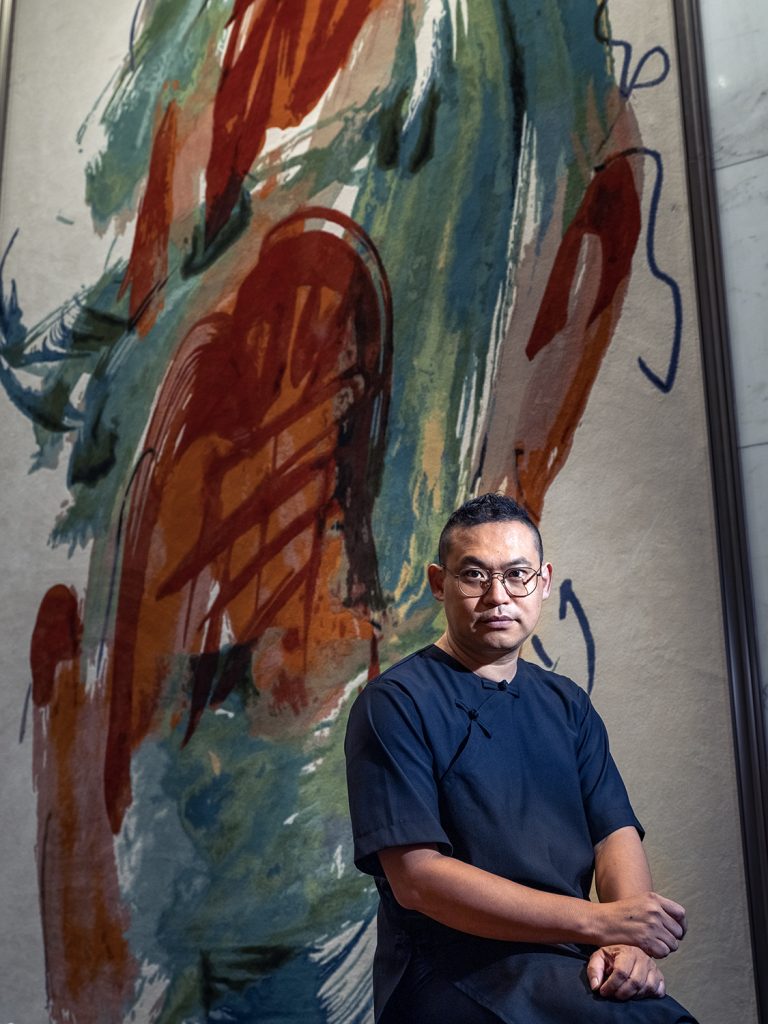
For this commission he created two watercolour paintings – View of Lisbon, Portugal and Octagonal Pavilion Library – the actual library is located in Macao. Respectively, he merged English characters and radicals of Chinese characters into his expressive brushstrokes. The paintings were adapted to tapestry and placed separately in two VIP lobby reception rooms. The process involved creating a digital copy of the original artwork then choosing yarns that matched watercolour hues and finally the tapestry itself was hand-woven by artisans.
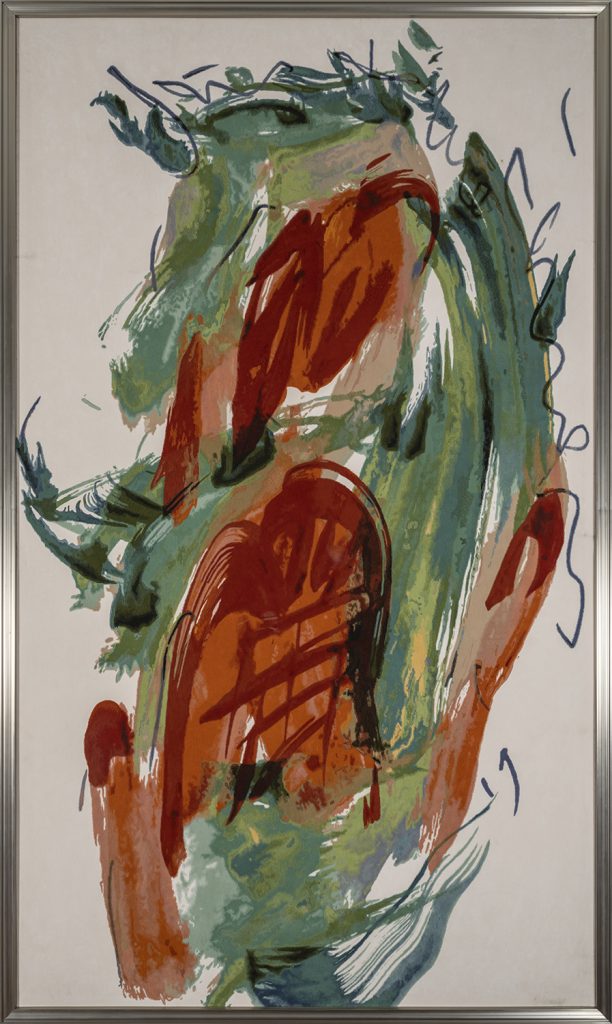
The texture of the woolen tapestry elaborates and amplifies the force of his brushstrokes, while the rich colours (red and orange for Lisbon, and red and green for the local library) imbues a certain warmth against the marble walls in the rooms.
Another reason for using the medium of tapestry was to present an expansive view of the Portuguese capital and the local library. The library was chosen as a subject due to its sharp colours, enhancing the contrast between the tapestry and the marble wall.
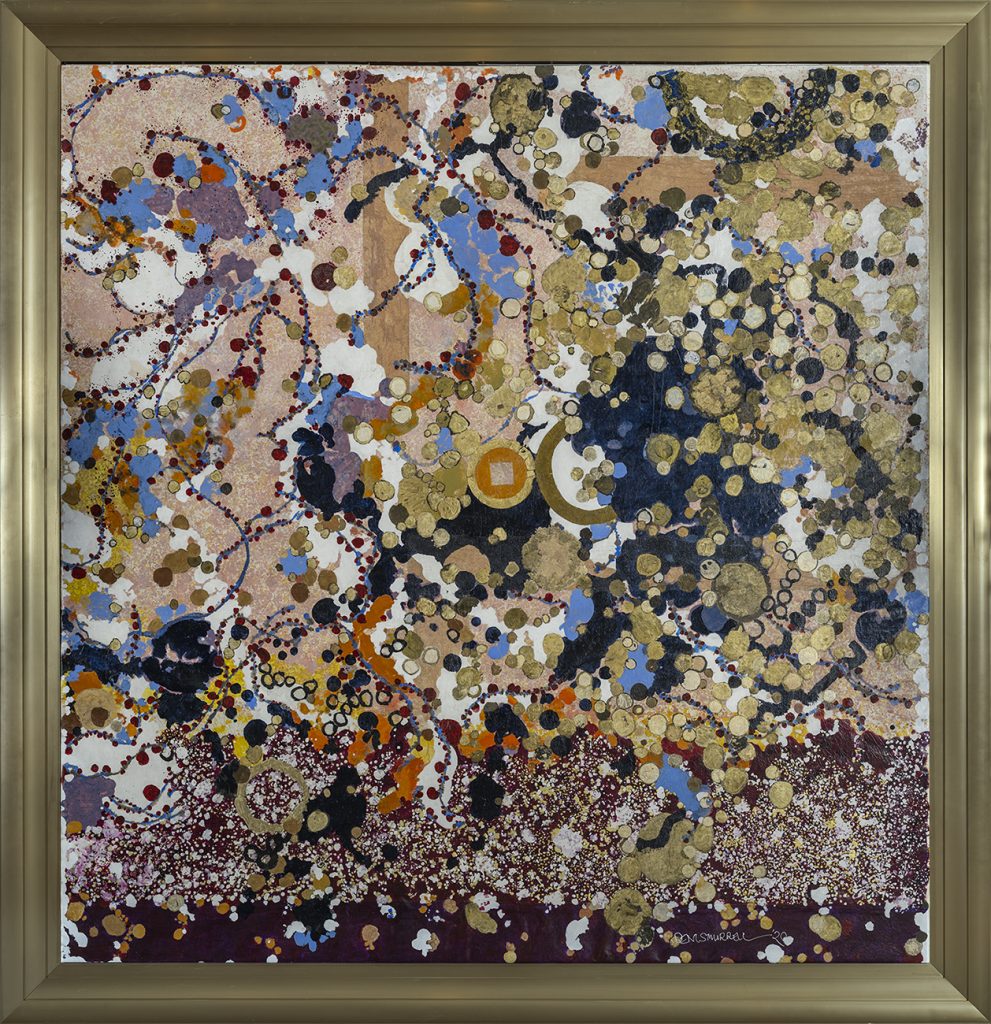
Australian Denis Murrell, who has been working as an artist and educator in Macao for over three decades, once again thrills art-lovers with his unique style – combining acrylic and ink with absorbent tissue papers. His commissioned works, Untitled I and Untitled II, are placed opposite each other in the West Lobby lounge of the resort, which is closest to Macau International Airport and Taipa Ferry Terminal. The rich palette, his spirited manner and lucid composition make these two pieces visual delights. Murrell absorbs acrylic and various colours of ink with tissue paper, torn by hand with the pieces then pasted on to the canvas.
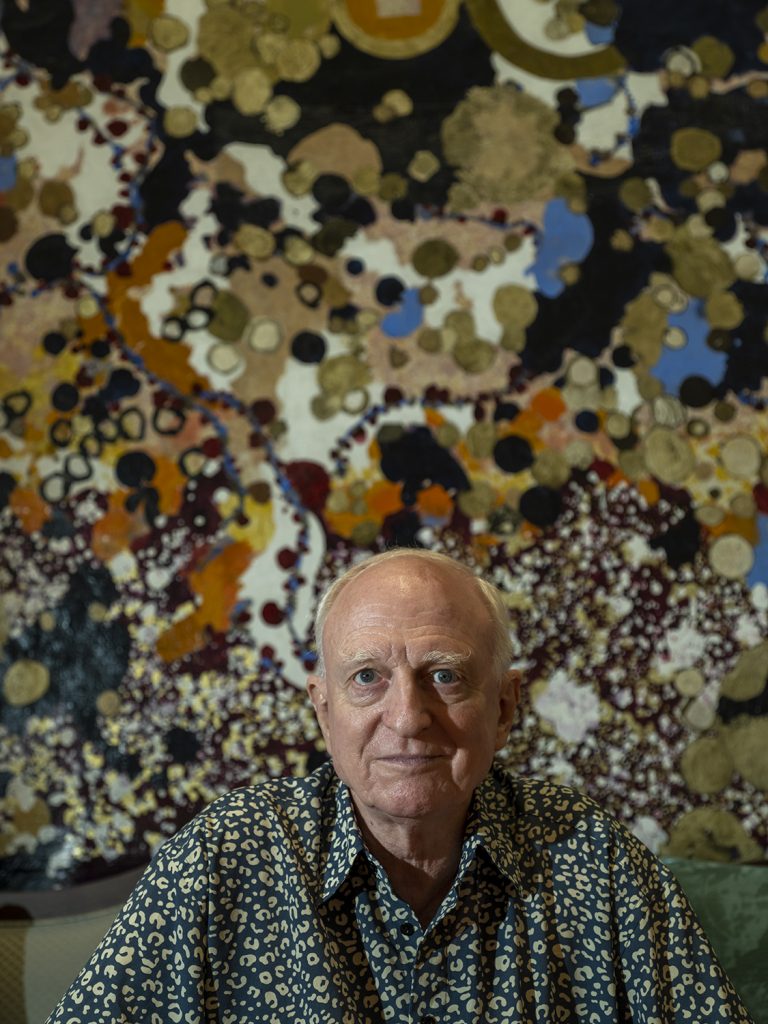
Playful touches
Macao-based Russian artist Konstantin Bessmertny, who also works in Hong Kong, expands his regular use of ambiguity in his two commissioned works – E. meets W. and W. meets E., poking fun at western and eastern stereotypes.

These two oil paintings are placed opposite each other at the East Lobby of the resort. Set in a beautiful garden with mountains and clouds stretching further behind, E. meets W. shows how the west is seen from an eastern perspective – packed with symbolic figures from the era of the Renaissance and contemporary western art, film, fashion, popular culture, and history. Similarly, the second piece W. meets E. portrays how the east is viewed from a western perspective,with symbols from iconic and tourist hotspots, characters from Chinese literature, history, music and politics.
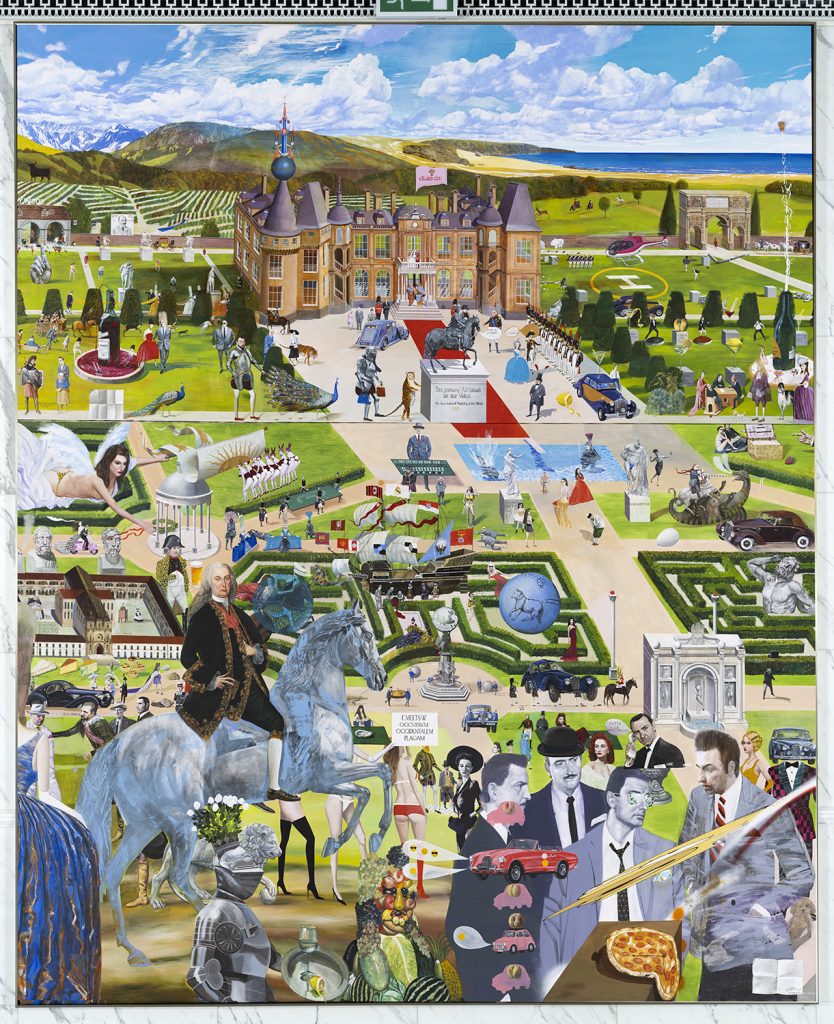
It is worth taking time to take in these scenes and consider their origins. With sharp colours, illogical narrative (such as illustrations of Confucius speaking English, eunuchs playing pool), these pieces juxtapose the stereotypical imagination of western and eastern cultures.
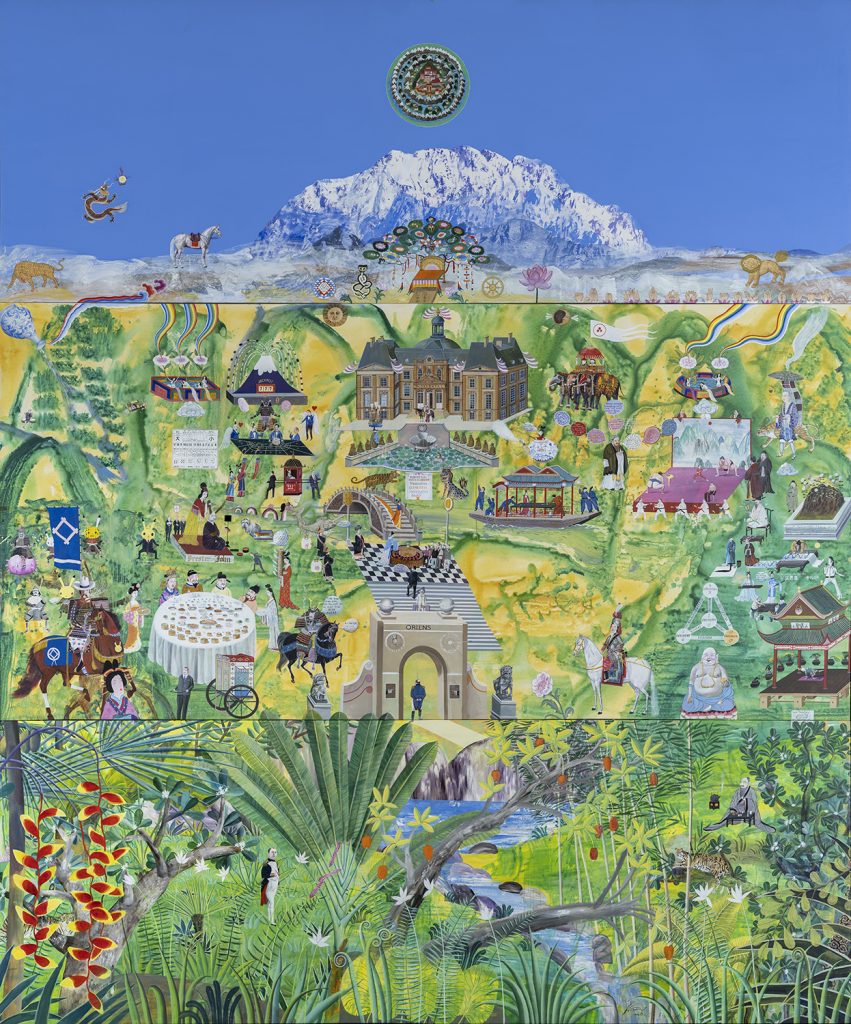
Another artist who also applies a playful touch is the respected award-winning architect and artist Carlos Marreiros. His Macao Glory illustrates the evolution of Macao from the 16th century up to the present in two azulejo tiles panels. The details are depicted in red (humanity and history) and blue (geography and architecture).

The composition is evocative of traditional Chinese landscape paintings with the major narrative in the middle and further scenery with details stretching at the top and further to the bottom. Viewers should start from the panel on the left. Two parties – western and eastern – are illustrated as part human, part fish or birds in the middle. The western party brings goods to trade with the eastern one. The symbols of fish and birds indicate the inability to communicate between the two cultures. The western figures also come with spaceships, representing technological influences on the east. At the bottom, viewers can see Macao’s old coastline and livelihood (shacks where people lived upstairs and raised pigs downstairs). The characters at the bottom are from various eras – Ming and Qing dynasties as well as contemporary Macao. The combination of eras and symbolic figures portray the city’s evolution.
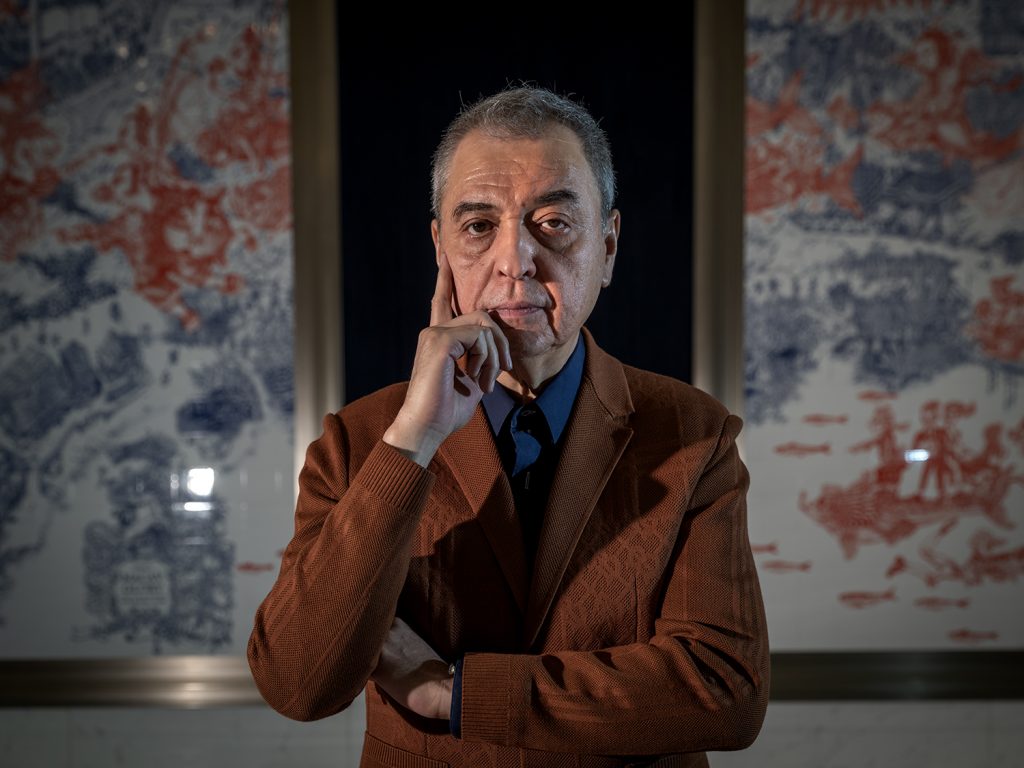
The panel on the right takes a bolder and more playful step in depicting the harmonious cultural exchange. In the middle, one can see historical and mythological figures mingling joyfully, such as a Chinese fairy flying with Cupid, the deity Nezha on roller-skates instead of his usual wind fire wheels, and Portuguese poet Luís Vaz de Camões exchanging ideas with Chinese landscape painter poet Wu Li. At the bottom, is the coastline at Meia Laranja in the Macao peninsula.
Marreiros shares the goal of his creation: “What I want the audience to see through these two artworks of mine is simple: Macao as a beautiful city as it actually is, a fantastic place to live, with good and beautiful people, a very rich history built throughout centuries of universal embrace between several diverse cultures, the main cultural matrices being the Chinese and the Portuguese.”
A hopeful beginning
Marreiros’ other commissioned work, Serene Dawn of Tomorrow, draws a graceful close to the public collection. The work juxtaposes traditional Southern Chinese architecture and their Portuguese counterparts, in addition to buildings epitomising the city’s rapid urban growth. A river combining everything in the middle suggests a sense of harmony as well as Macao’s location on the Pearl River Delta.
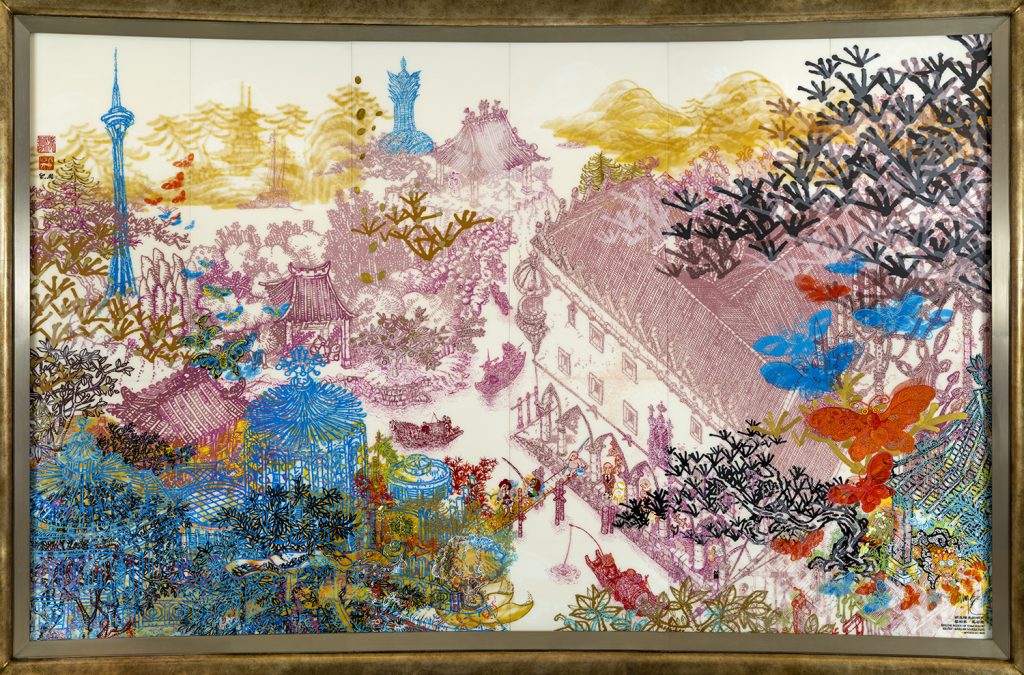
The artist has made numerous attempts to work with different shades of colour and perspectives. First he painted the basic contours of the details, then placed an acrylic board on top and applied another layer of acrylic paint. The landscape painting somehow poeticises Macao’s cityscape.
On the artistic significance of the resort’s initiative, Marreiros notes: “For me, it was very meaningful to have the opportunity to do these two artworks for decorating these two big lobbies, and it is meaningful precisely because local artists often don’t have the chance to do such huge and visible artworks. Therefore, this opportunity was wonderful for local artists because the client trusted us and we fulfilled their desire, in such a way that the response from the visitors and the media were very positive.”
This public art collection has brought together many great artists’ interpretations of the city’s East-meets-West character and allowed them to explore and experiment with new artistic methods and expressions. Visitors and guests at Grand Lisboa Palace can not only enjoy all these remarkable artworks under one roof, but also learn about the city’s historical and social changes.
